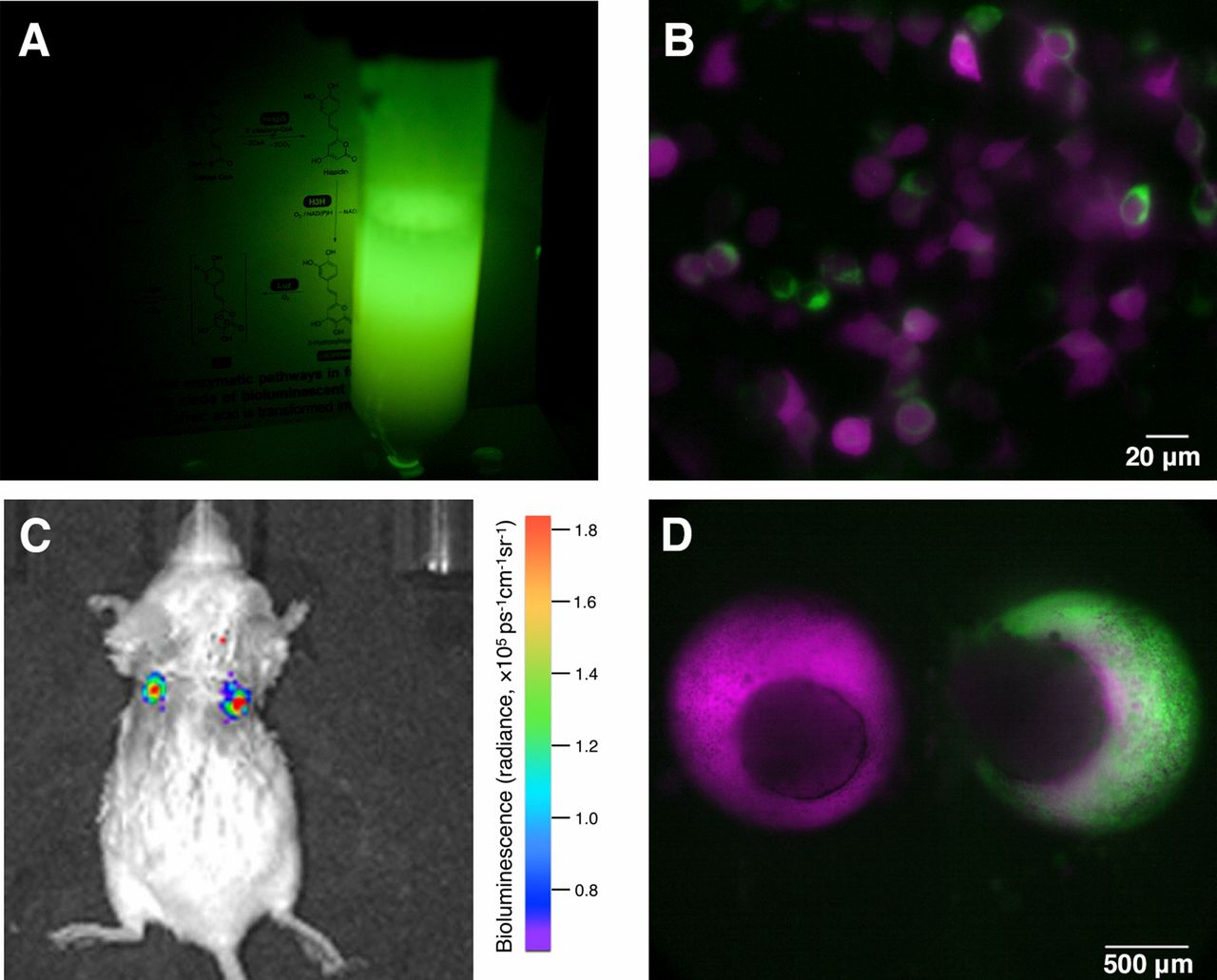Bioluminescence, or the ability to emit light, is present in many species throughout the tree of life. While there are several different light-emitting molecules known as luciferins, only one biochemical pathway for luciferin biosynthesis has been fully described, and it is only found in bacteria. Researchers have now identified the fungal luciferase and three other key enzymes that form the biosynthetic cycle of fungal luciferin from caffeic acid, as simple and common metabolites. The researchers introduced the identified genes into the yeast Pichia pastoris' genome, along with caffeic acid biosynthesis genes, and discovered that the resulting strain was autoluminecense scientist and standard media. They looked at the evolution of the enzymes involved in the chemical synthesis cycle and discovered that fungal bioluminescence evolved through the evidence of genes, including two independent gene duplications. The existence of a complete eukaryotic luciferin biosynthesis pathway has numerous applications in biomedicine and bioengineering. The fungal bioluminescent system is a genetically encoded bioluminescent system found in eukaryotes, allowing three genes to be expressed artificially to create bioluminescent eukaryotes. The system is also non-toxic to eukaryotic cells, and the luciferase can be easily adapted for bioimaging purposes.
The fungal bioluminescence system is a eukaryotic bioluminescence system that produces luciferin. N.nambi H3H synthesizes luciferin from its precursor hispidin, while hispidin synthase can synthesize hispidin directly from caffeicacid, a common cellular metabolite. The system has great potential for synthetic biology to create self-luminous animals and plants. The fungal bioluminescent system is appealing for a variety of biomedical imaging applications due to its water-soluble and cell-permeable compound, as well as the fact that its light-emitting reaction is independent of ATP availability.


No comments:
Post a Comment